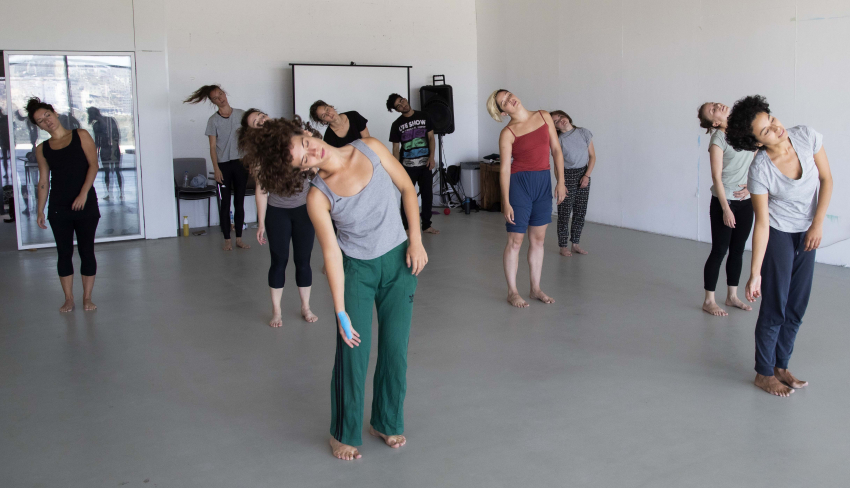
Ramallah – (A.M. Qattan Foundation)
On Wednesday 31 July 2019, the intensive summer dance workshops for 2019 (Les Ateliers Déplacés – workshops on relocation) concluded. The workshops ran for 10 days at the A.M. Qattan Foundation and Sarreyat Ramallah.
The school, which was attended by 53 Palestinian and international dancers was held in partnership with les ballets C de la B and Sarreyet Ramallah for the first time in Palestine. The school’s activities included five workshops, four of which were held at the AMQF building entitled; “How to Reveal our Archive?” by Farah Saleh; “The Beginning of a New Show” by Hildegard De Vuys; “Contemporary Dance in Duos” by Salma Ataya and Yazan Iwidat; and a workshop on the “political body” by Serge Aimé Coulibaly. The fifth workshop entitled “Dim Encounters” led by Kabinet K (Joke Laureyns & Kwint Manshoven) took place at Sareyyet Ramallah.
This year’s programme stood out for its diverse workshops aimed at helping dancers and performers design a future show through employing new dance instruments which can be adapted in whichever means they prefer. The goal of the workshops was not only limited to producing dance performances, but also to produce dancers capable of directing their own performances within various dance fields using the basics of dance: the body, the other body and the space in between.
In her workshop entitled “The Beginning of a New Show”, Hildegard De Vuys relied on Dramaturgy. Participants learned how to develop a play or a performance through silent dance, going through five stages: exposition, rising action, climax, falling action and denouement. This dramatic structure builds events based on the time of each stage.
Farah Saleh stated that this was the first year that brought together Palestinian and international dance instructors and pointed that the idea behind the workshops has been to introduce foreign artists and students to Palestine and Palestinian dance through this school. With their participation, this year’s workshops differed from previous years for its focus on theory.
Saleh added, “How to Reveal our Archive” is a workshop which intends to understand daily gestures and movements expressed naturally by each body. Through our understanding we can design performances based on the archive of each individual, later to become the archive of the collective. If each of the participants analyse their movements and the moments of their colleagues, they can be later perceived and dealt with collectively on stage. “How to Reveal our Archive” presented theoretical concepts and explained how they correspond to daily movements, thus if each individual can explain his or her movement, then movement is not only for the sake of movement.”
The workshops included a theorical component which facilitated discussions and brainstorming about how to build and direct performances. Having a culturally diverse group also created the opportunity for participants to share their different perspectives on dance and to get acquainted and analyze and understand each other’s dance styles.
Dance instructors Ataya and Iwidat admired the range of dancers’ ages and cultural backgrounds. This has eased the participants’ reactions to different exercises. Although local and international dancers use different dance styles, they all share the same base; in the sense that the basics of dance are the same regardless of identities and cultures, but dance differs depending on how movements and exercises are used.
The dancers expressed their admiration of the tremendous energy of the instructors over five continuous days; holding thoughtful debates on dance techniques and creating an open space for dancers to express themselves through Dabke, hip-sop, contemporary dance, etc.
